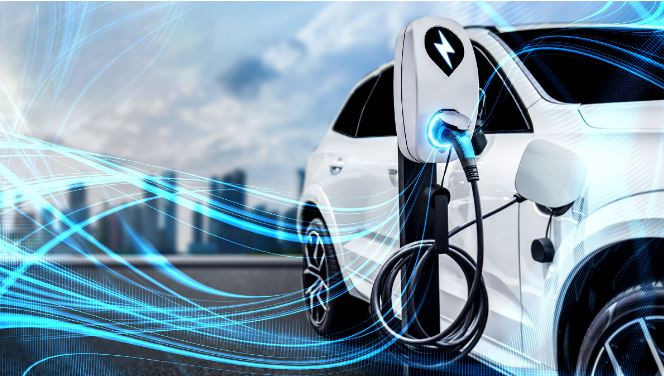Although a complete switch to electric vehicles (EVs) will be a long way, the adoption growth track for EVs is rather inclined than anticipated when compared to two-wheelers and three-wheelers.
A new report claims that, when compared to FY21, EV sales across all segments (2-wheelers, 3-Wheelers, 4-Wheelers, and e-buses) increased by 110% in FY22. In FY 22, units from various segments totaled about 5.2 lakhs. According to a recent report, the EV value chain revenue pool is predicted to reach between $76 billion and $100 billion by 2030, which might result in an $8 billion to $11 billion profit pool. Important events like ‘Auto EV India’ will make the EV industry more visible, which will naturally encourage the expansion of the EV industry in India.
Will 2 Wheelers stay in the lead position?
The demand for Electric two-Wheelers in India has grown as a result of factors including comfort, low ownership costs, and convenience of commuting. It is anticipated that this will continue into the future. Nine companies control 90% of the high-speed E-2W market. Many additional firms are entering the market in different segments of the entire value chain.
Although charging is somewhat simpler for two-wheelers, other sub-segments charging infrastructure needs to be improved if sales are to increase significantly.
Additionally, EV finance is gaining steam, making it much simpler for consumers to obtain credit, which is encouraging more people to purchase EVs, particularly Electric two-wheelers.
In addition, it is anticipated that government tax breaks and subsidies provided by FAME II will continue to influence customer preference for Electric 2 Wheelers. The adoption curve for two-Wheelers is the steepest, and it is anticipated to remain that way for a shorter period of time (2–3 years) because there is a smaller cost differential between ICE and EV for two-wheelers than for four-wheelers. Furthermore, the market for the two-wheelers or three-wheelers is anticipated to expand dramatically over the next two to three years as a result of the government’s regulation of delivery fleets. As more use cases become accessible in the market after 4-5 years, the adoption rate for four-wheelers will accelerate. As use cases for insurance claims, resale value, useable life, and battery replacement costs develop, we will see the early majority prefer the Swift. Currently, the early adopters are choosing 4-wheeler EVs.
The biggest obstacle to widespread EV adoption in India has been range anxiety brought on by a lack of charging infrastructure and power disruptions. In order to meet the government’s goal of EV adoption by 2030—30% penetration in private automobiles, 70% in commercial vehicles, and 80% in 2Ws and 3Ws—India will need to install at least 20 lakh public charging stations across the nation.
There are now 5 lakh public charging stations planned, and ideally, by 2023 there will be many more. Many flats in metropolitan areas already have rooms designated for private charging. Incentives from the policy are also being increased for infrastructure for public charging. This may enable the widespread use of EVs. Additionally, many more startups are anticipated to boost their research and development efforts in 2023 in order to discover homegrown answers to the range anxiety problem.
Is Localization on the Horizon?
Other components besides battery cells are already produced in India. According to experts, as a result of EV manufacturing being simpler than that of ICE engines, new OEMs will start to appear both locally and internationally. Although it may be challenging to predict rapid acceptance in the 4 Wheeler area for new OEM, the 2 & 3 Wheeler industry will experience stronger adoption. The accessibility of service networks and spare parts is another issue with new OEMs. Although EVs lessen their significance, buyers would consider these when making a decision to purchase an expensive 4 Wheeler.
India’s component market is already quite developed. It is also anticipated that the government’s campaign for FAME II subsidies will keep encouraging local procurement. Furthermore, considerable capital expenditure plans for local manufacturing have already been declared by large vehicle OEMs. Additionally, all component suppliers are preparing for the switch to EVs. A number of already-existing participants in the auto component market have made investments in the development of EV-specific capabilities, and more recent component makers are emerging as well.
New Business Prospects in EV
As the market for EVs expands, new business models could see growth, and more entrepreneurs could enter the market and challenge the established models. Platform Sales for EVs will grow when new OEMs enter the market; they have product competence and price competitiveness but lack the legacy players’ distribution networks. As a result, these new OEMs would require a specific sales channel to distribute their products and boost sales above the competition.
The market for after-sales services is expected to undergo a similar change, according to experts. Managing exclusive centers may become impossible if the number of components in a vehicle decreases, which will decrease the need for after-sales care. This is where multi-brand competence can be helpful.
We anticipate businesses offering auxiliary services to grow in popularity now that consumers have a larger selection of products to pick from.
Businesses that provide infrastructure or swapping for charging will continue to experience growing use. Additionally, finance is essential for boosting car sales in India, so businesses that use their expertise in electric vehicles to offer unique financial offerings are also likely to succeed.









